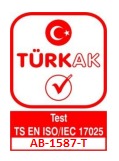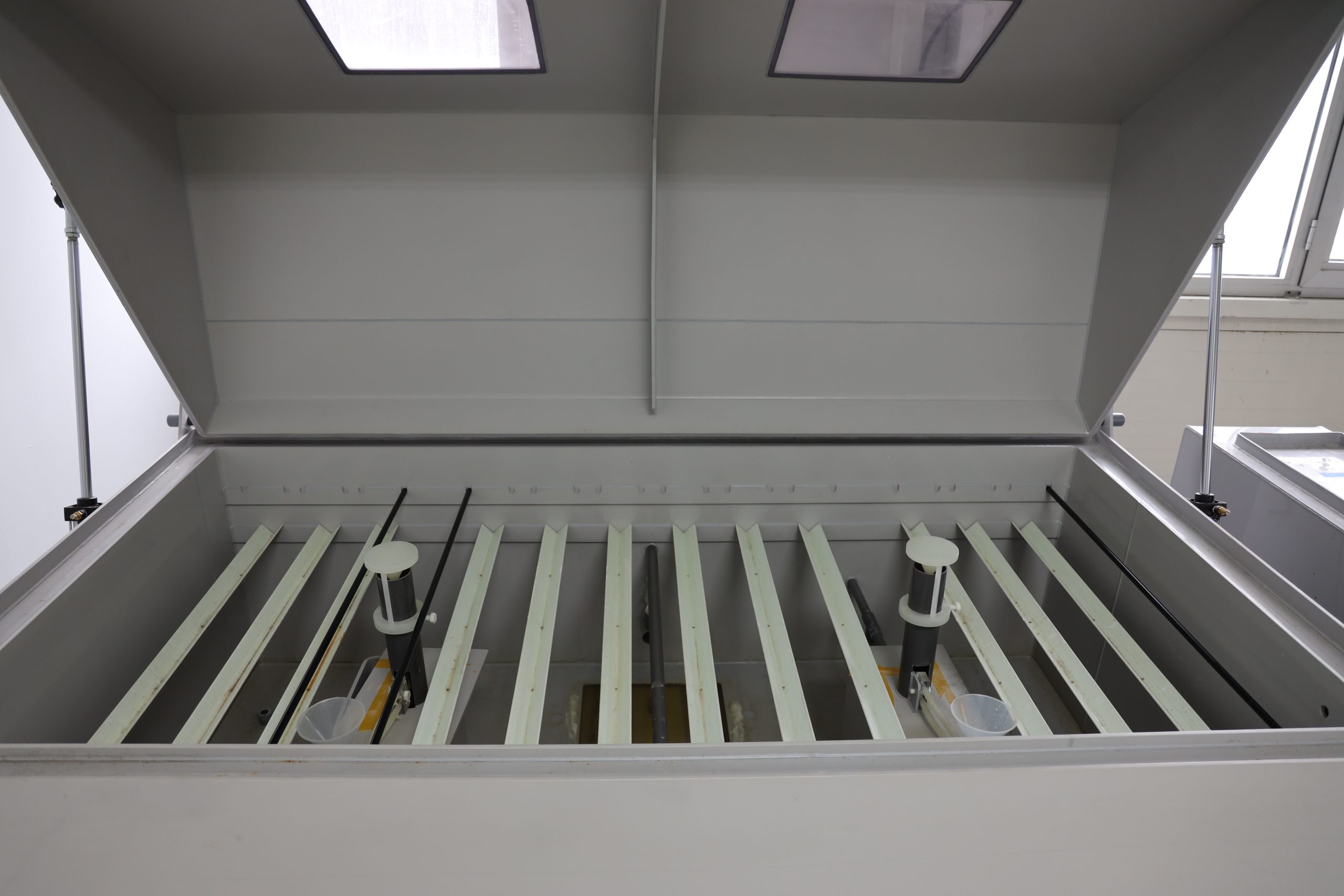Salt Fog Test
MIL-STD-810 F/G/H — RTCA DO 160 G — ASTM B117

Tuz Sisi Testi, koruyucu kaplamaların, boyaların ve malzemelerin tuzlu, nemli ve korozyona neden olan ortamlara karşı dayanıklılığını değerlendirmek için uygulanan kritik bir test yöntemidir. Özellikle savunma, denizcilik, otomotiv ve dış mekân ekipmanları için önem taşıyan bu yöntem, ürünlerin ömrünü ve güvenilirliğini belirlemede temel rol oynar.
Test sırasında tuz birikintilerinin malzemeler üzerindeki fiziksel, elektriksel ve kimyasal etkileri gözlemlenir. Bu etkiler arasında elektrokimyasal reaksiyon, stres korozyonu, yalıtım malzemelerinin bozulması, kısa devre riskleri, boyanın kabarması ve hareketli parçaların tıkanması sayılabilir. Ayrıca, kaplama yüzeylerinde oluşabilecek delik veya çatlaklar da malzemenin tuzun etkisiyle korozyona uğramasına yol açabilir.
Tuz Sisi Testi; MIL-STD-810, RTCA DO-160, IEC, ISO, EN, ETSI, ASTM gibi ulusal ve uluslararası standartlara uygun olarak gerçekleştirilir. Test numuneleri genellikle diğer deneylerde tekrar kullanılmaz; kullanılacaksa, nem ve mantar gelişim testleri tuz sisi testinden önce, kum ve toz testleri ise tuz sisi testinden sonra uygulanmalıdır.
Bu yöntem sayesinde ürünlerin korozyon direnci, dayanıklılığı ve uzun vadeli performansı doğrulanarak, zorlu çevresel koşullarda güvenle kullanılmaları sağlanır.
Standards and Methods
- MIL-STD-810F Method 509.4
- MIL-STD-810G Method 509.5
- MIL-STD-810H Method 509.6

Enviromental Test Chamber Specifications
| Ölçü | Birim | |
| Width | 1200 | mm |
| Size | 1200 | mm |
| Height | 600 | mm |
| Humidity Change Range | %20 - %99 | RH |
CONTACT BY EMAIL
[email protected]
VOICE COMMUNICATION
+90 (312) 905 06 90

STANDART KONTROL VE TEST HİZMETLERİ A.Ş.
